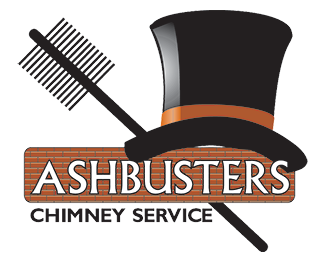Frequently Asked Questions
Q: Do I really need to have my chimney cleaned?
A: Yes! With each and every fire, flammable particles can settle along the walls of your chimney liner. As these particles and deposits build up, they can cause a chimney fire, which can quickly spread to nearby combustibles, trees, and onto the roof.
Q: How do I know when it’s time to clean my chimney?
A: The Chimney Safety Institute of America (CSIA) recommends having your fireplace cleaned when soot deposits reach a thickness of ¼”. You’ll also want to schedule the moment you notice glazed deposits.
Scheduling annual inspections can help alert you when it’s time to have a professional chimney cleaning performed.
“Chimneys, fireplaces, and vents shall be inspected at least once a year for soundness, freedom from deposits, and correct clearances. Cleaning, maintenance, and repairs shall be done if necessary.” (The National Fire Protection Association, standard 211)
Even if you rarely use your chimney and fireplace, it’s imperative that you have it inspected annually and cleaned regularly to ensure that there is no water damage, flue blockages, or other decay or damage.
Q: Why is my fireplace smoking?
A: If your fireplace is smoking, don’t think it’s normal. It may be a result of:
- Flue blockage. Creosote buildup, animals, nesting materials, or other flue blockages could be causing your smoke problems. The best way to resolve this issue is to schedule a professional chimney cleaning.
- A closed damper. Your smoke problem may be a simple fix — have you checked to make sure your damper is open?
- A flue that is too small for the appliance it is venting. Another common cause of smoke problems is a flue that is not big enough to vent the appliance. If placing a 4” to 6” wide piece of aluminum foil above your fireplace opening seems to help, you may want to have a Smoke Guard or a draft induction fan installed.
- A chimney that is too short. If your chimney is not tall enough, it won’t be able to properly remove smoke from your home. If this is the cause of your problems, we may be able to simply extend your chimney.
Q: What could be causing my fireplace to stink?
A: Most fireplace odor problems can be attributed to creosote buildup, especially if you notice the odor getting worse with the warmer months. If you have an odor problem, schedule a professional cleaning. For particularly bad odors, you may also need to use baking soda, kitty litter, or a commercial chimney deodorant to resolve the issue. Be sure to also have your chimney checked for leaks.
Q: What do I do if there’s ever a fire in my chimney?
A: The first thing you should do in the event of a chimney fire is call the fire department and get everyone out of the home.
Once the fire is taken care of, you’ll need to have your chimney professionally inspected and cleared for safe use before using it again.
Q. We’ve heard there is a bird that once it gets into your chimney you can no longer use your fireplace. Is that true?
A. We think you are talking about the chimney swift – one of four regularly occurring species of swifts found in North America and the most common swift found east of the Rockies. They got their name because they have become accustomed to building their nests in chimneys as well as abandoned buildings and occasionally stone wells.
They are migratory birds and, yes, they are protected by law. Removing, killing, or harming them in any way can have heavy penalties and fines with it. No chimney sweep that wants to stay in the business will do any of the above. However, they normally nest from May through November until they make their way home. At that time get your chimney inspected and swept. Also, add a chimney cap with a good animal and bird screen as these birds will come back to the same nesting area every year if possible. Also, these nests are highly flammable and can cause chimney fires if not removed.
If you would like additional information, click here.
Meeting our team will reveal a lot about us and our commitment to friendly, quality service.
